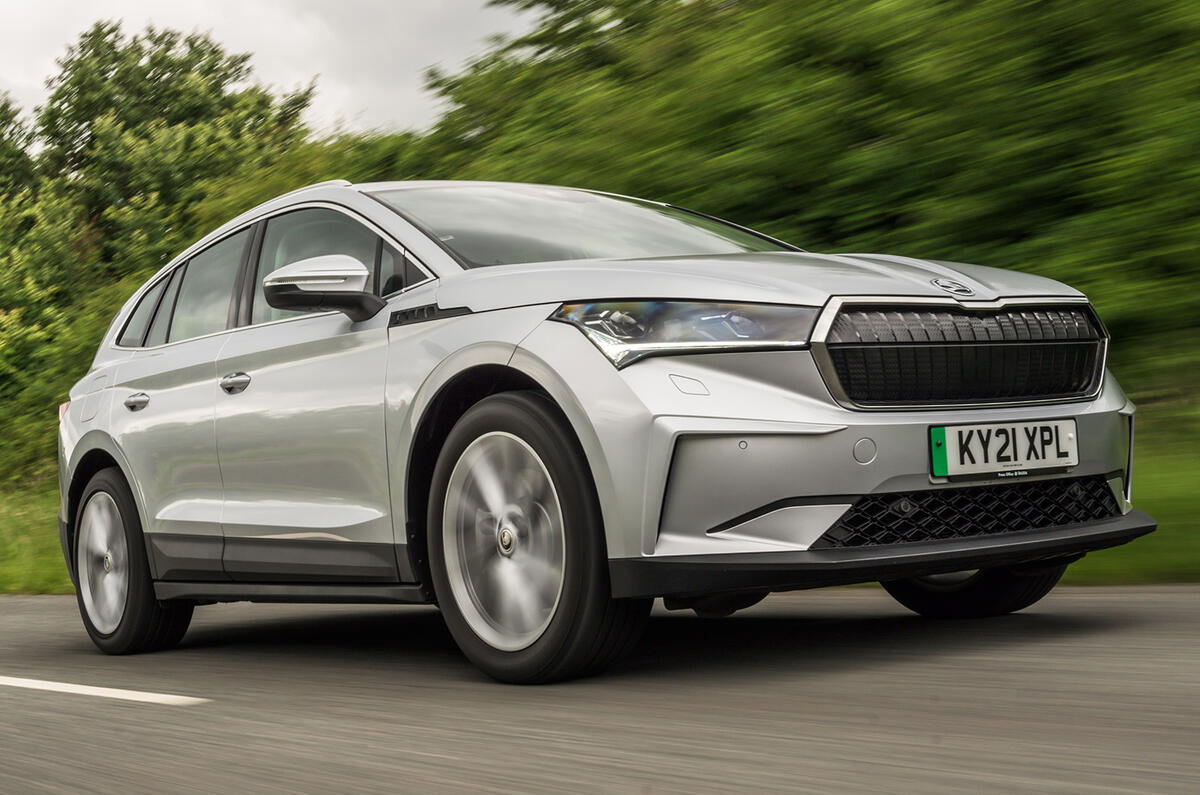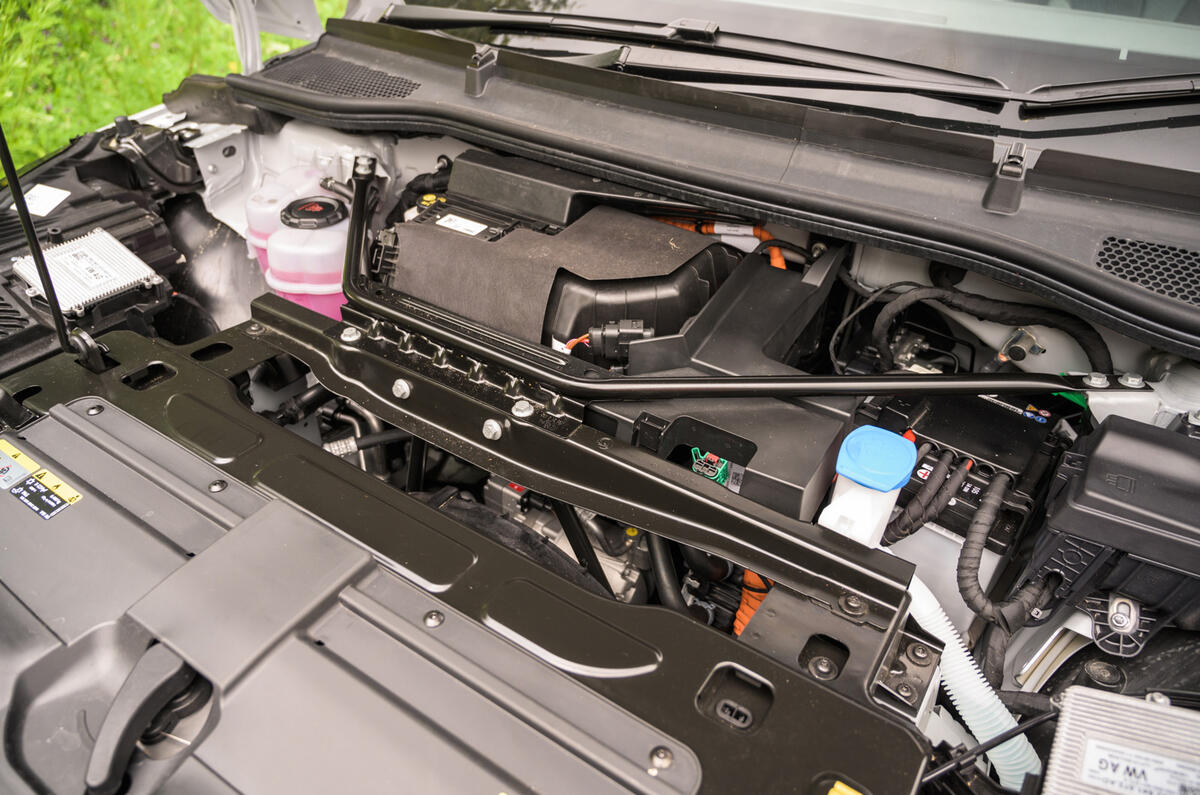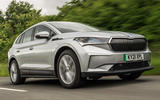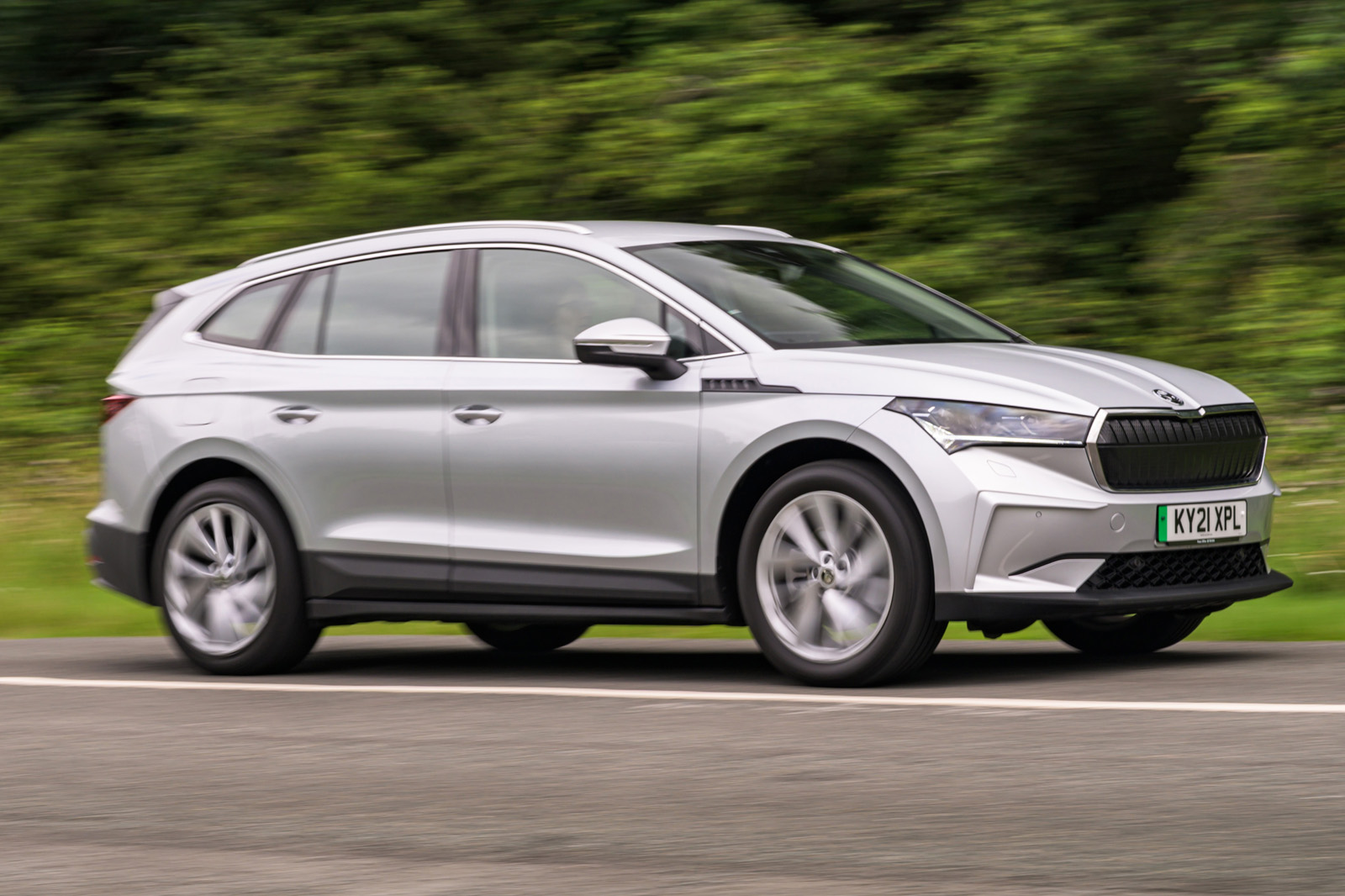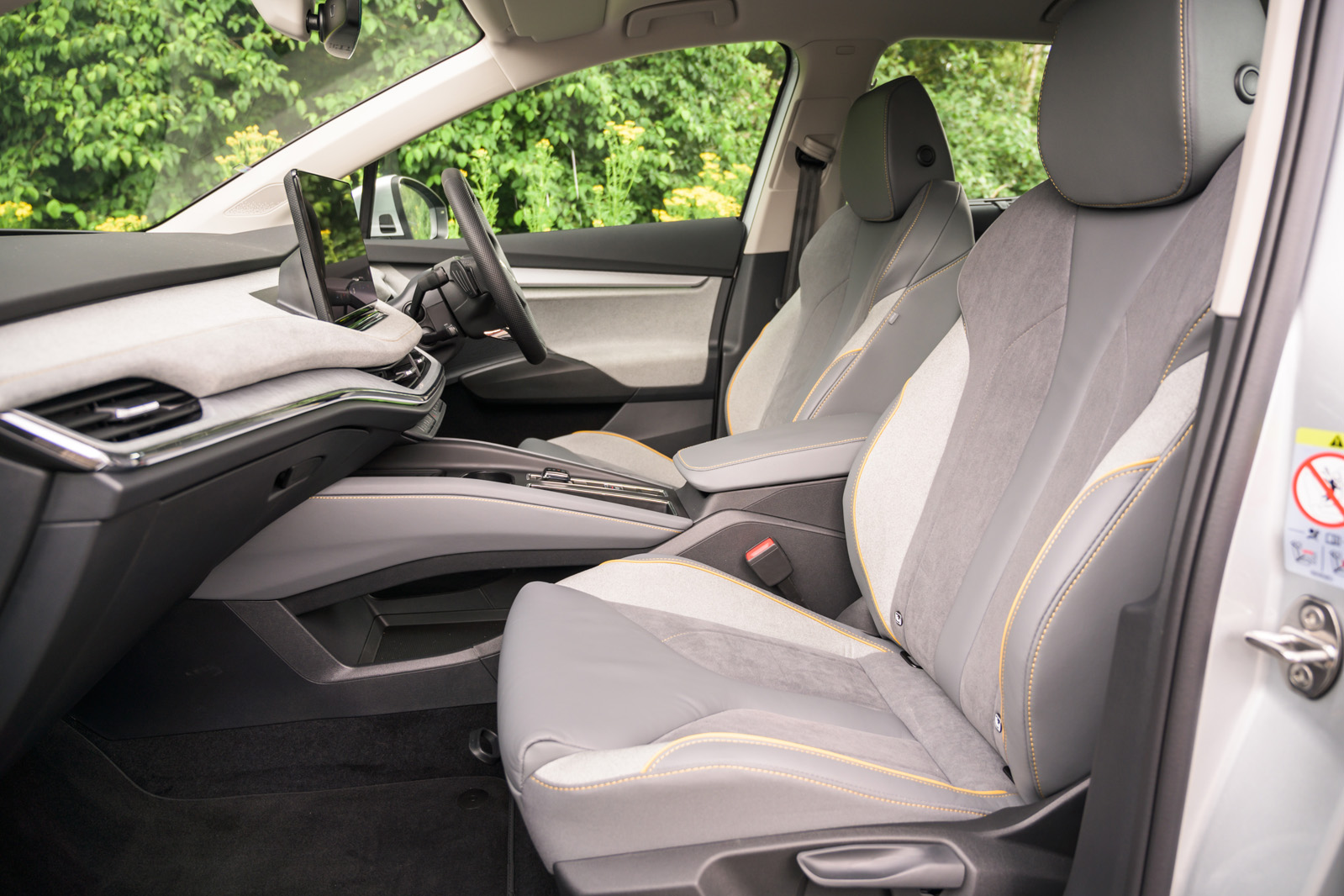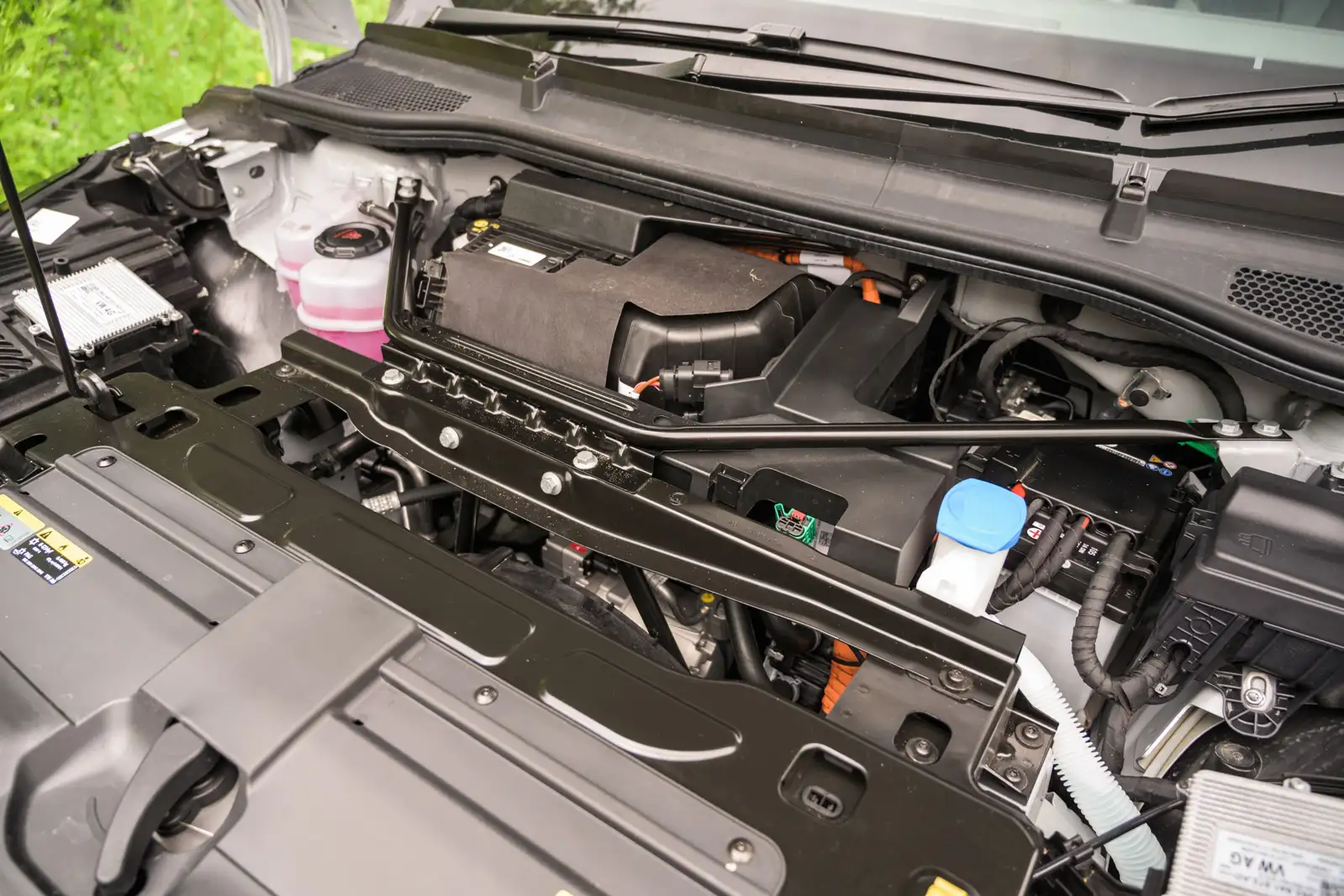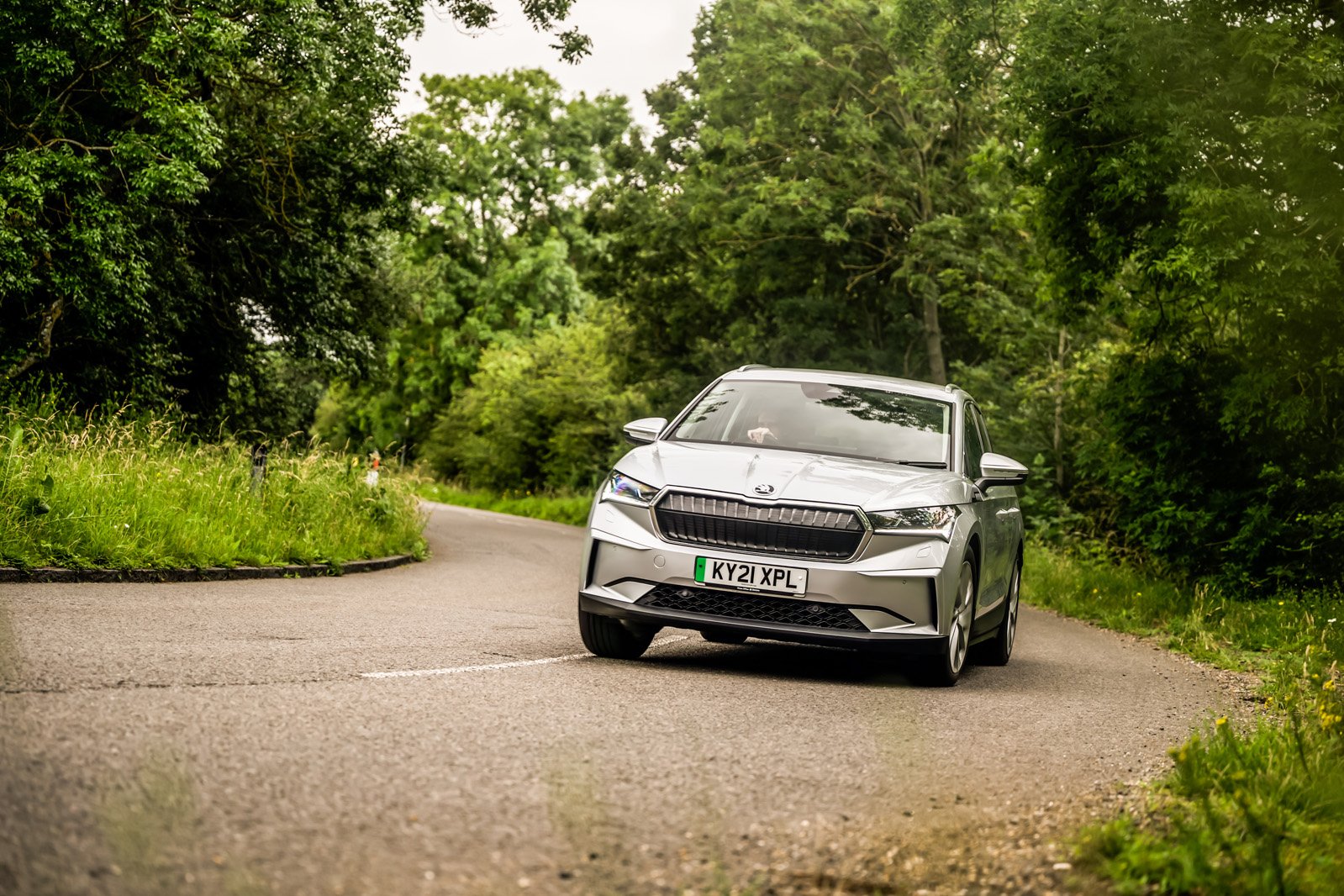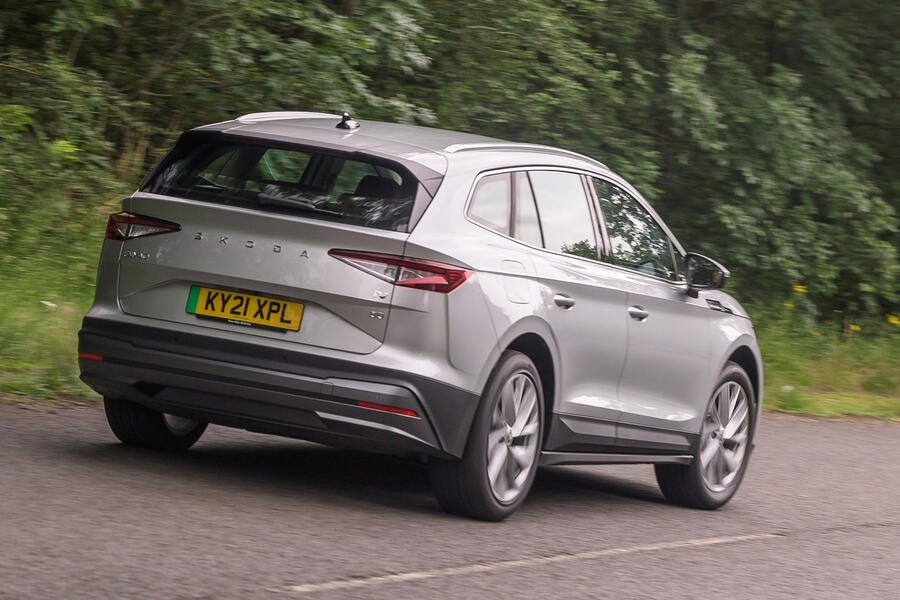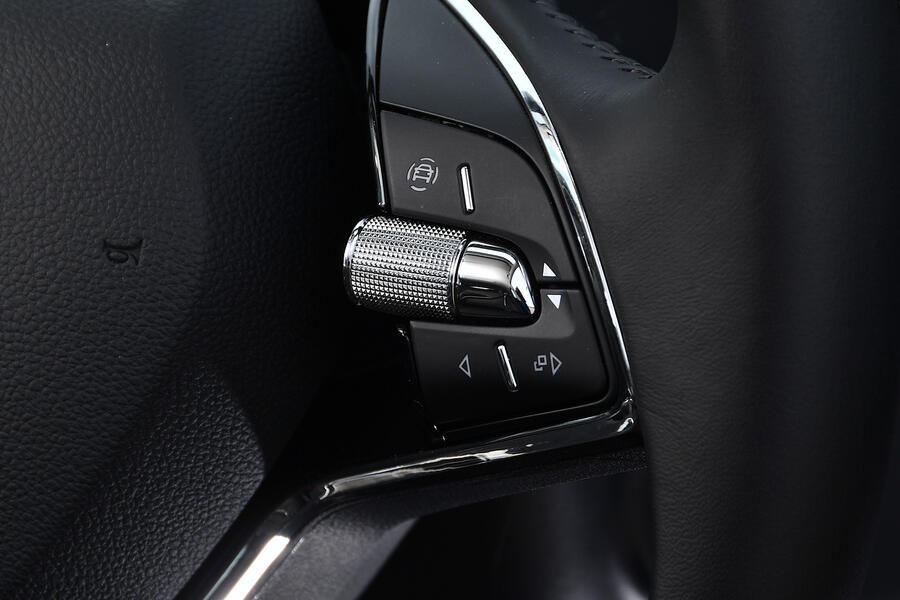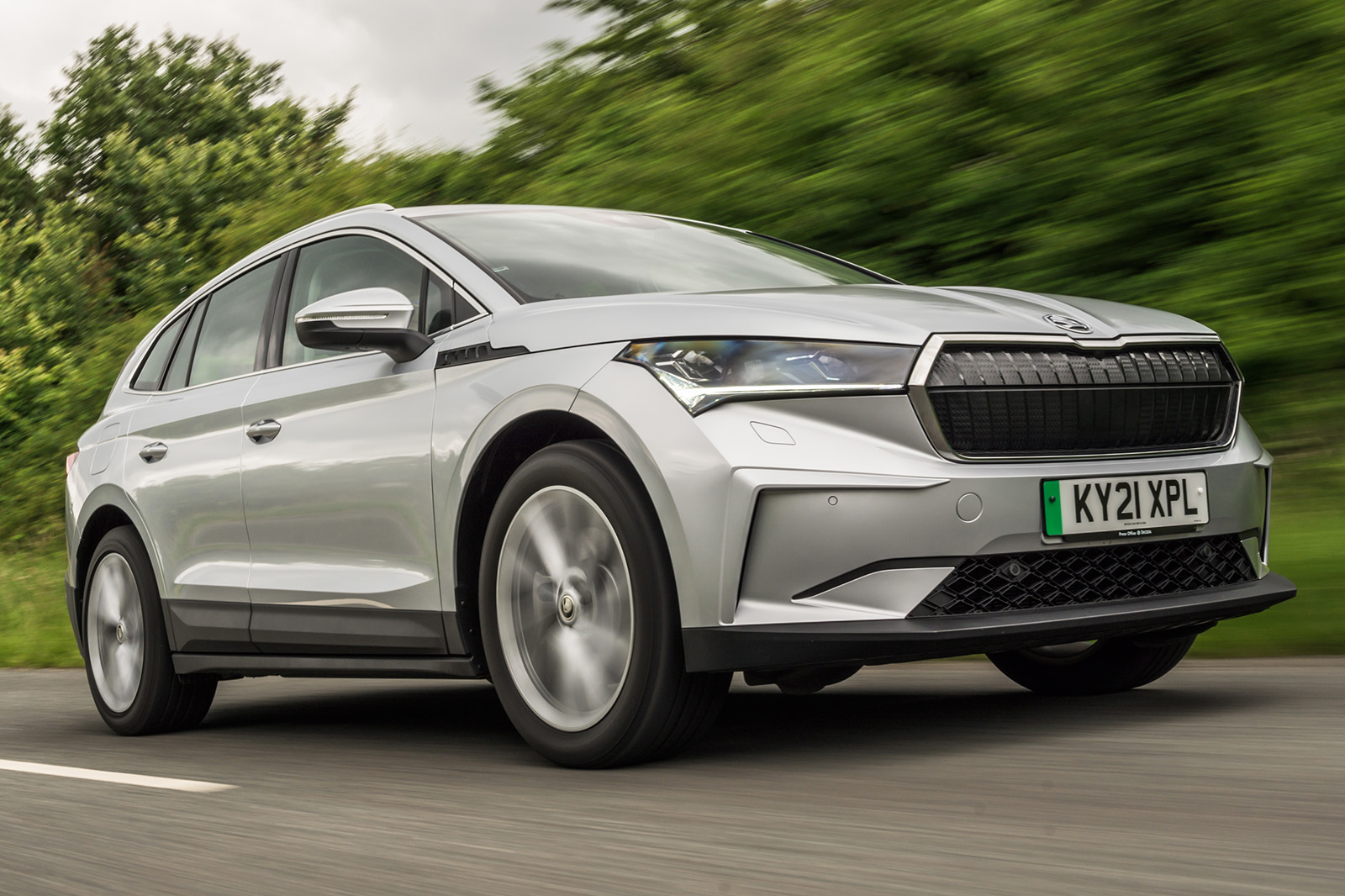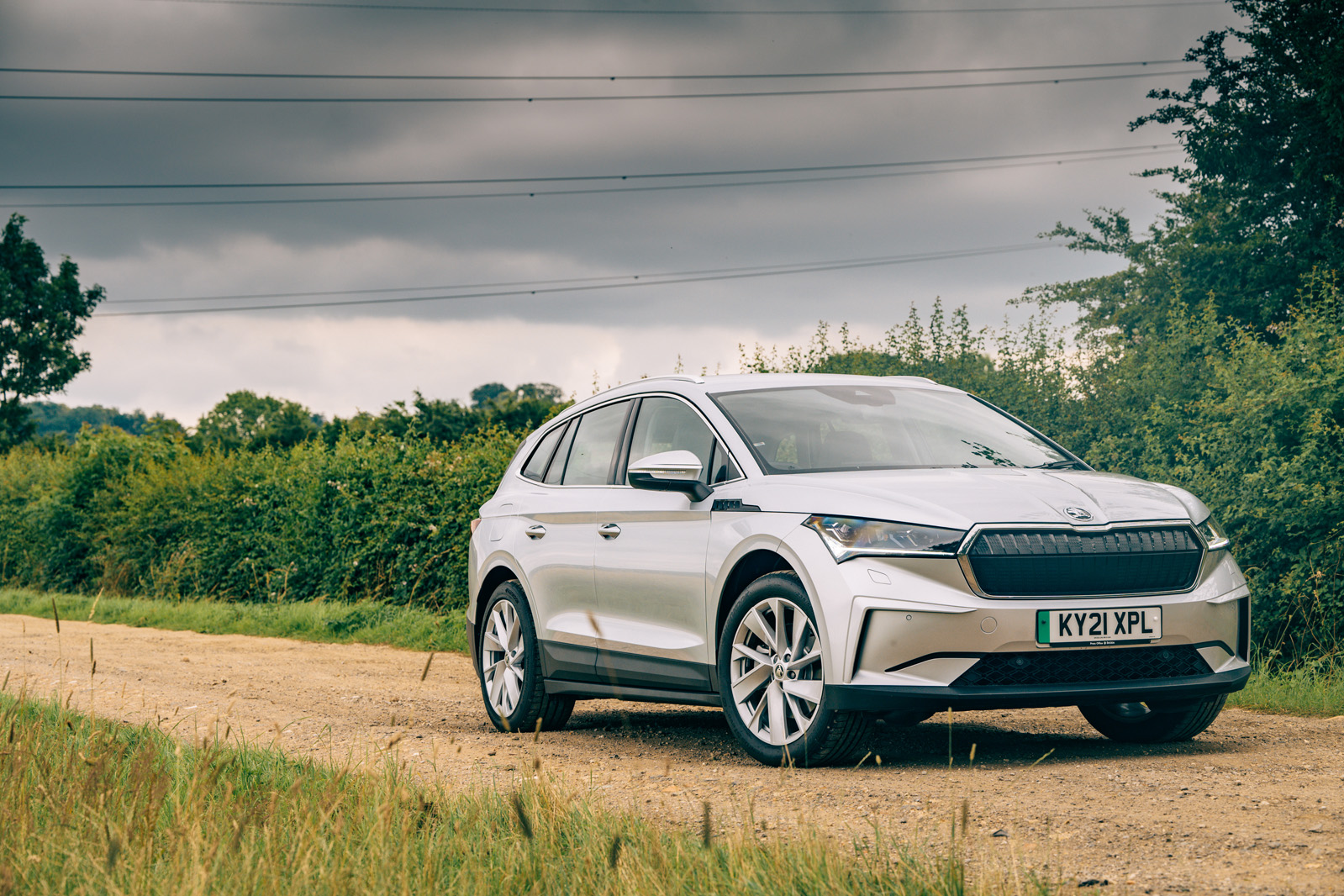The cab-forward proportions and long rear overhang pay dividends for the packaging of the Enyaq’s interior, resulting in a spacious-feeling cabin. While that impression was aided by our test car’s light grey upholstery, there can be no doubt that this is the most practical of all these first-generation, MEB-platform EVs.
How much of the space you can actually use does depend a little on which options you tick. There is ample room on the back seat, even in the middle, thanks to the absence of a centre tunnel. On the other hand, the optional and slightly flimsy tray tables steal a little leg room from taller adults, who won’t be able to stretch out in the back like they might in a Hyundai Ioniq 5. The 585-litre boot is fairly large for an EV with a drive motor underneath the floor, but Skoda makes you pay extra for a movable boot floor. Our car didn’t have it, so the load floor wasn’t totally flat when the rear seats were folded.
Enyaqs have a cubby beneath the boot floor to store the charge cable, but it’s not quite big enough to fit all the cables. Some EVs have storage under the bonnet for the same job, but while there is space for one in the Enyaq, Skoda hasn’t used it. Remembering to remove the charge cable from its home before filling the boot with cargo, then, will be a frequent challenge for Enyaq owners.
The cabin materials are a little plain in places, with some coarser plastics at lower levels and anodised-look trim strips up high that are clearly plastic. They resist fingerprints much better than the typical gloss black plastic, however, and the soft-touch fabrics on the dash make for an inviting, lounge-like environment, even in the entry-level models.
The front cabin is cleverly thought out – ‘simply clever’, Skoda might say. There's a big armrest cubby, a storage slot for car park tickets and a clip in the windscreen for parking tickets. The coin holders are a nice touch, but perhaps a little antiquated, and the cupholders are very small. There are two phone trays in the centre console that are angled away from the driver to avoid distraction and that will wirelessly charge your device if so optioned.
Despite technically having a flat floor, the car has a big centre console between the front occupants, but it has all sorts of big bins and trays all the way down to the floor for storage.
Multimedia - 4 Stars
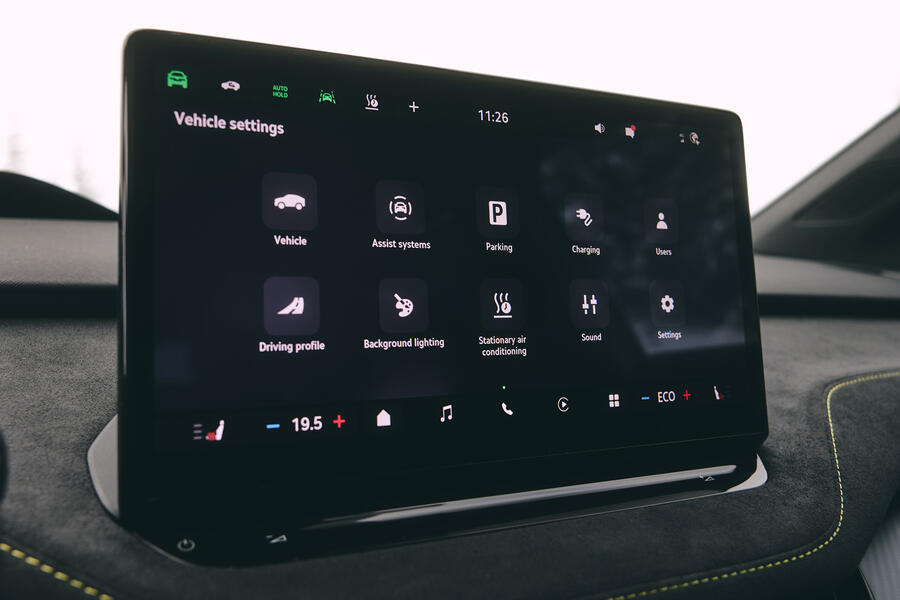
Although Skoda uses the same fundamental infotainment system as other Volkswagen Group brands, they all give it their own finishing touch – and Skoda’s execution is usually smoother and a bit easier to use. Such is the case here in the Enyaq. Precious few physical buttons grace the dashboard, but as the screen is massive, at 13.0in, that’s not an issue, and most important settings are relatively easy to find – although if you do struggle to work it out, don’t expect the voice activation to be of any help.
In 2024, Skoda introduced a thorough software update with a number of useful improvements. There are now two bars of customisable shortcuts that are permanently on screen, which makes it easy to access things like the settings menu, phone mirroring, lane keeping assistance and battery preconditioning. The climate control is controlled through the touchscreen, but the temperature adjustment is permanently on screen, and since the 2024 update so are the heated seats. A physical button takes you to the climate menu. The screen also responds faster than before and we didn't experience any glitches in our Enyaq 85 test car.
Some annoyances remain. The touch bar for the volume is still unlit, and the settings menus require you to rotate a picture of the car to find the right function, which is very form-over-function. It's also disappointing how bad the built-in navigation is at finding charging stations you might want to use. Its information is out of date, and there is no easy way to filter out all the slow chargers.


